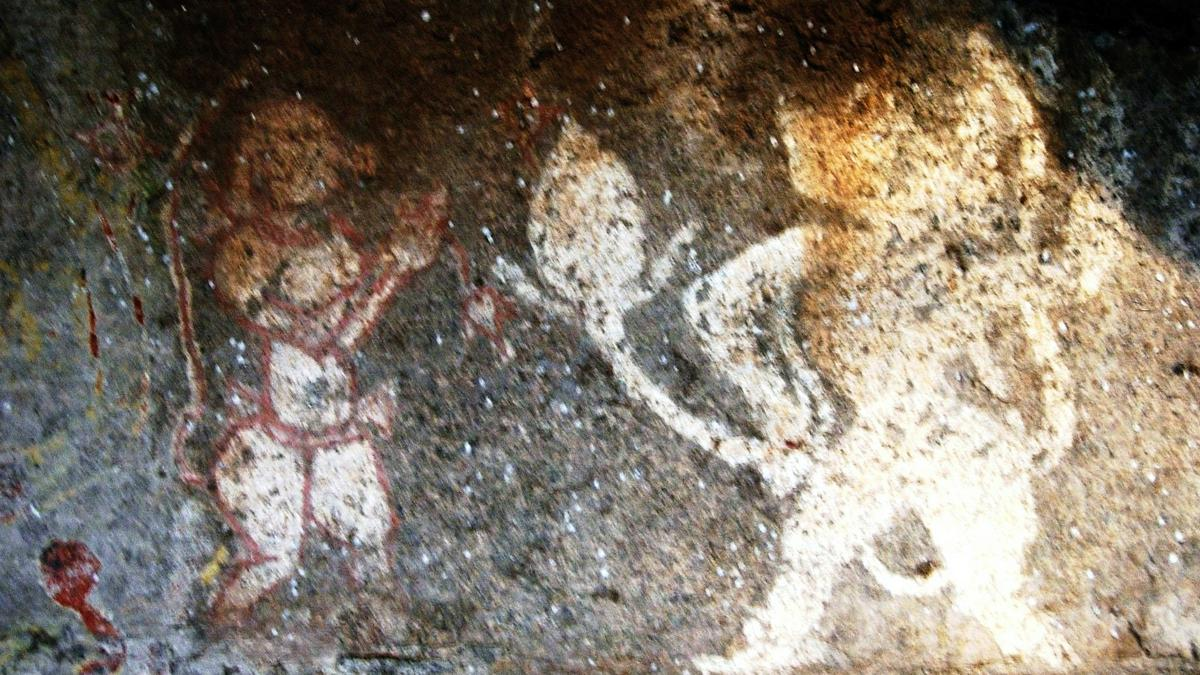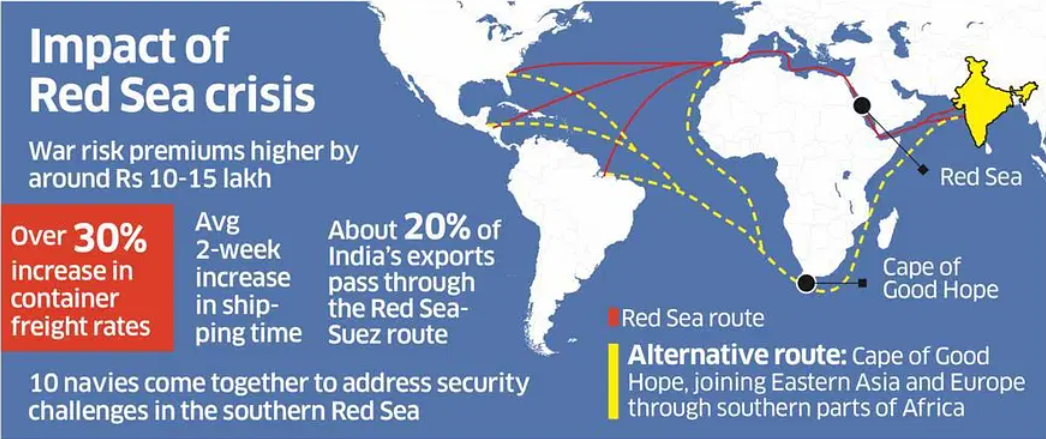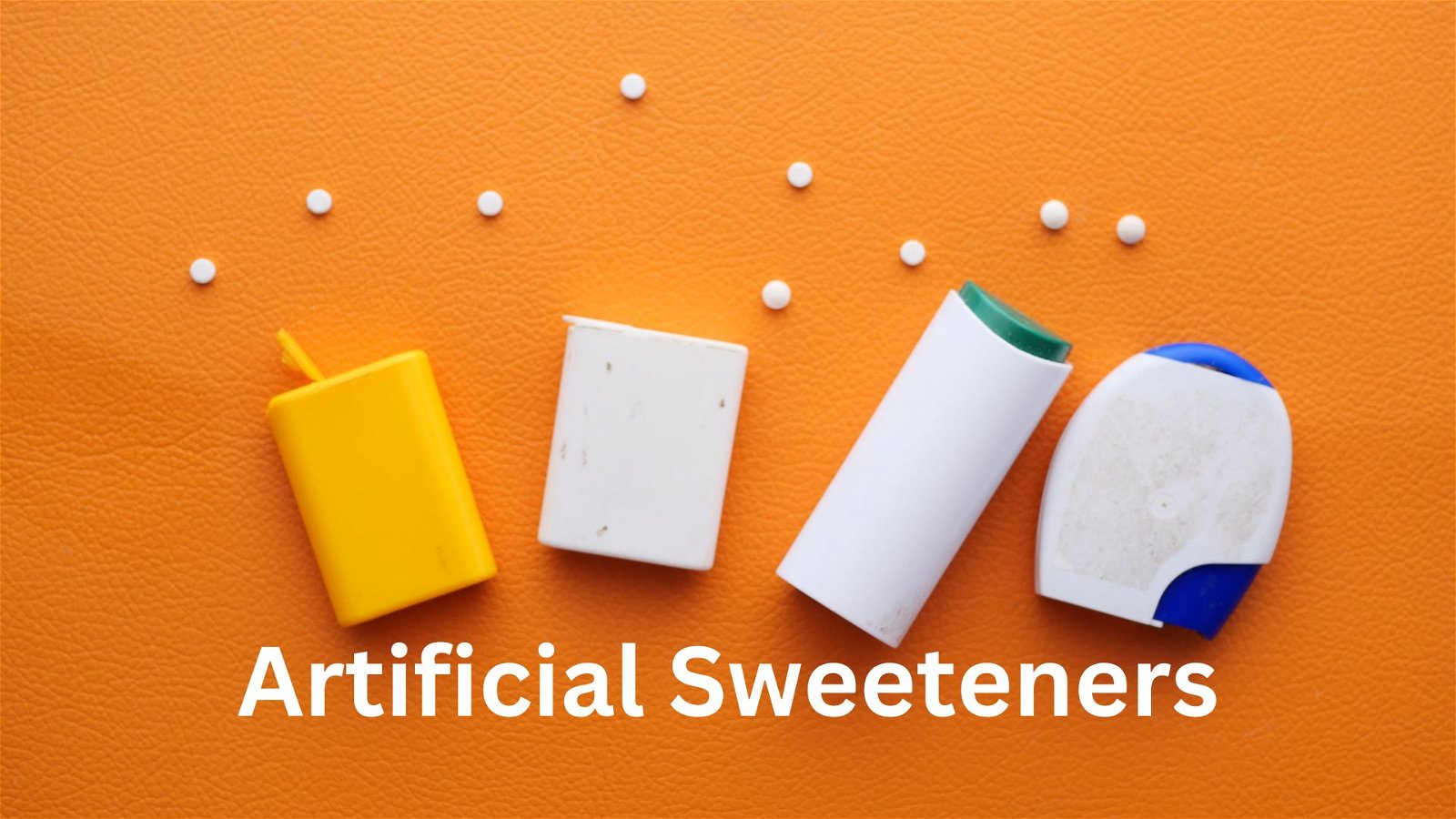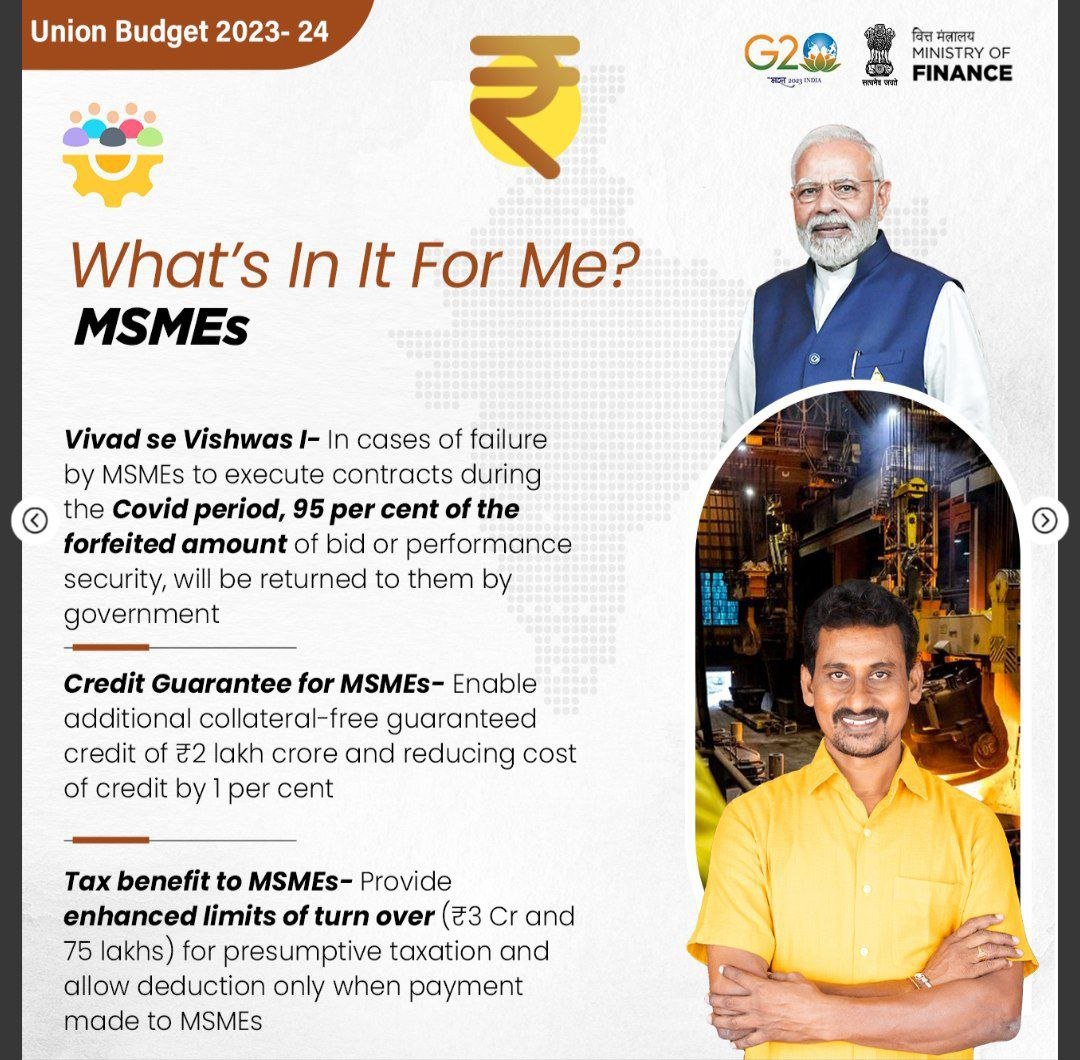
Current Affairs August 24, 2023: CCI, NCDRC and CCPA, Microsites project, Sagarmala Programme, Minimum Export Price, ASTRA Missile, Chandrayaan-3 Mission, Crash Landing of Luna
Subscribers of "Current Affairs" course can Download Daily Current Affairs in PDF/DOC
Subscribe to Never Miss an Important Update! Assured Discounts on New Products!
Must Join PMF IAS Telegram Channel & PMF IAS History Telegram Channel
{GS2 – Polity – Bodies – Statutory – 2023/08/24} CCI
- Context (PIB): Competition Commission of India (CCI) Issued Order Against Chandigarh Housing Board for Indulging in Anti-Competitive Practices.
- Competition Commission of India (CCI) is a statutory body established in 2003 by the GoI under the Competition Act, 2002.
- It is mandated to enforce the competition law under the Competition Act, 2002.
- It consists of one Chairperson and six members appointed by the Central Government.
Mandate
- It gives opinion on competition issues received from a statutory authority.
- It undertakes competition advocacy, create public awareness, and impart training on competition issues.
- It looks into cases and investigates them if the same has a negative impact on competition.
- It approves combinations under the act so that two merging entities do not overtake the market.
Objectives
- To eliminate practices having adverse effects on competition
- To promote and sustain competition
- To protect the interests of consumers
- To ensure freedom of trade in the markets of India
- To establish a robust competitive environment
Achievements of CCI
- It has adjudicated more than 1,200 antitrust cases i.e., the case disposal rate is 89 % in antitrust cases.
- It has reviewed more than 900 mergers and acquisitions till date, within a record average time of 30 days.
{GS2 – Polity – Bodies – Statutory – 2023/08/24} NCDRC and CCPA
- Context (PIB): National Consumer Disputes Redressal Commission (NCDRC) dismisses appeal by Cloudtail against Order passed by Central Consumer Protection Authority (CCPA).
National Consumer Disputes Redressal Commission (NCDRC)
- It is a statutory body established in 1988 under the Consumer Protection Act (CPA) 1986.
- It is headed by a sitting or a retired Judge of the SC or a sitting or a retired CJHC.
- Jurisdiction: To entertain a complaint valued more than two crores.
- Appellate and Revisional jurisdiction from the orders of State Commissions or the District commission.
- Appeal: Appeal against the order of NCDRC can be filed in SC within a period of 30 days.
- CPA 2019 provides for:
- Central Consumer Protection Authority (CCPA) to promote, protect and enforce the rights of consumers.
- Consumer Disputes Redressal Commissions at national, State and district levels to look into consumer complaints.
- Consumer Protection Councils at the district, State, and national level, as advisory bodies.
- Consumer mediation cells at the district, State, and national levels.
- CPA 2019 provides for:
| DCDRC | SCDRC | NCDRC | |
| Head of the commission | A person who is or has been or is eligible to be appointed as a District Judge. | A person who is or has been a Judge of a High Court. | A sitting or a retired Judge of the Supreme Court of India or a sitting or a retired Chief Justice of an High Court. |
| Composition | President (Head) and at least two other members. | President (Head) and at least four other members. | President (Head) and at least four other members, one of whom shall be a woman. |
| Pecuniary jurisdiction | Up to 50 lakhs | More than Rs 50 lakh to Rs 2 crore | More than Rs 2 crore |
| Appeal | To SCDRC | To NCDRC | To the Supreme court of India |
Central Consumer Protection Authority (CCPA)
- It is a regulatory authority set up under the Consumer Protection Act (CPA) 2019.
- It has the authority to protect, promote, and enforce the rights of the consumers and prevent violation of their rights under the Act.
- It consists of the following members appointed by Central Government:
- Chief Commissioner
- Two Commissioners: One commissioner each represents goods and services.
|
- It regulates matters related to:
- Violation of consumer rights
- Misleading advertisements
- Passes orders to recall goods or withdraw services that are hazardous and reimbursement of the price paid.
- Imposing penalties
- Unfair trade practices
- Safety notices to consumers against unsafe goods and services
- can file Suo motu cases on behalf of a class of customers.
{GS2 – MoHFW – 2023/08/24} Microsites project
- Context (PIB): The National Health Authority (NHA) announced 100 microsite projects for accelerated adoption of the Ayushman Bharat Digital Mission (ABDM) across the country.
- Mizoram becomes the first state in India to operationalize an ABDM Microsite.
- Under this, All healthcare facilities including the private clinics, small hospitals and labs in the region shall be made ABDM-Enabled and will offer digital health services to the patients.

The ABDM Microsites
- ABDM Microsites are small and specific geographical regions where the ABDM aims to onboard small and medium-scale private healthcare providers.
- These providers include clinics, nursing homes, diagnostic centres, etc., that offer primary and secondary healthcare services to the people.
Objectives of the ABDM Microsites
- To create a Network of ABDM-Enabled Facilities, which can interact seamlessly with each other and with other stakeholders in the digital health ecosystem.
- The ABDM Microsites aim to benefit the patients by enabling them to link their health records generated at these facilities with their Ayushman Bharat Health Accounts (ABHAs).
AYUSHMAN BHARAT HEALTH ACCOUNT (ABHA)
|
Implementation of the ABDM Microsites
- The ABDM Microsites are implemented by the State Mission Directors (SMDs) of the ABDM, who are responsible for ABDM in their respective states.
- The SMDs are supported by the National Health Authority (NHA), which is the apex body that oversees the implementation of the ABDM at the national level.
- The NHA provides financial resources and overall guidance to the SMDs for the ABDM Microsites.
- The SMDs also collaborate with an Interfacing Agency, which is a third-party organization that has an on-ground team to reach out to the healthcare providers in the microsite area.
{GS2 – MoS – 2023/08/24} Sagarmala Programme
- Context (IE I DH): The Sagarmala Programme (2015) is the flagship programme of the Ministry of Shipping to promote port-led development in the country through harnessing India’s 7,500 km long coastline and 14,500 km of potentially navigable waterways.

- These include projects from various categories such as:
- Modernisation of existing ports and terminals
- Roro & tourism jetties
- Port connectivity
- Inland waterways
- Industrialization around ports
- Skill development, etc.
- The main vision of the Sagarmala Programme is to reduce logistics costs for EXIM (Export-Import) and domestic trade with minimal infrastructure investment.
- Sagarmala could boost India’s merchandise exports to USD 110 billion by 2025 and create an estimated 10 million new jobs (four million in direct employment).
Concept & Objectives of the Sagarmala Programme

Components of the Sagarmala Programme (Four Pillars of Sagarmala)

- Port Modernization & New Port Development: De-bottlenecking and capacity expansion of existing ports and development of new greenfield ports.
- Port Connectivity Enhancement: Enhancing the connectivity of the ports to the hinterland, optimizing cost and time of cargo movement through multi-modal logistics solutions including domestic waterways (inland water transport and coastal shipping).
- Port-linked Industrialization: Developing port-proximate industrial clusters and Coastal Economic Zones to reduce logistics cost and time of EXIM and domestic cargo.
- Coastal Community Development: Promoting sustainable development of coastal communities through skill development and livelihood generation activities, coastal tourism etc.
{GS3 – IE – Exports – 2023/08/24} Minimum Export Price
- Context (BS): The Central government may be looking at a minimum price for foreign sales of speciality rice, including basmati, to stop unscrupulous traders from sending too much abroad.
- Minimum Export Price (MEP) is a policy measure that the government uses to regulate the export of certain commodities.
- It is the minimum price that an exporter has to charge when exporting the commodity from India.
- The main purpose of MEP is to protect the domestic supply and price of the commodity, especially when there is a shortage or a surge in demand in the domestic market.
Features of MEP
- MEP is imposed on selected commodities, such as basmati rice, onion, potato, etc., that are essential for domestic consumption and have a high demand in the international market.
- The government fixes MEP based on various factors, such as domestic production, consumption, availability, international prices, etc.
- MEP is a temporary measure imposed for a short duration. For example, MEP can be removed when there is a bumper crop or a decline in domestic demand.
- MEP is a kind of quantitative restriction to trade, as it limits the quantity of exports by making them less competitive in the global market.
Legal Backing
- MEP is implemented under the provisions of Section 5 of the Foreign Trade (Development And Regulation) Act, 1992, which empowers the government to formulate the export and import policy.
- The policy can be amended from time to time by notification in the Official Gazette.
{GS3 – S&T – Defence – 2023/08/24} ASTRA Missile
- Context (IE I TOI): Tejas, Light Combat Aircraft (LCA) LSP-7 successfully fired the ASTRA off the coast of Goa.
About ASTRA Missile
- ASTRA is an indigenous and beyond visual range air-to-air missile (BVRAAM) that can engage and destroy highly manoeuvring supersonic aerial targets.
- It is designed and developed by the Defence Research and Development Laboratory (DRDL), Research Centre Imarat (RCI) and Defence Research and Development Organisation (DRDO
- ASTRA is a major step towards ‘Aatmanirbhar Bharat’, as it reduces the dependence on foreign imports for critical defence equipment.
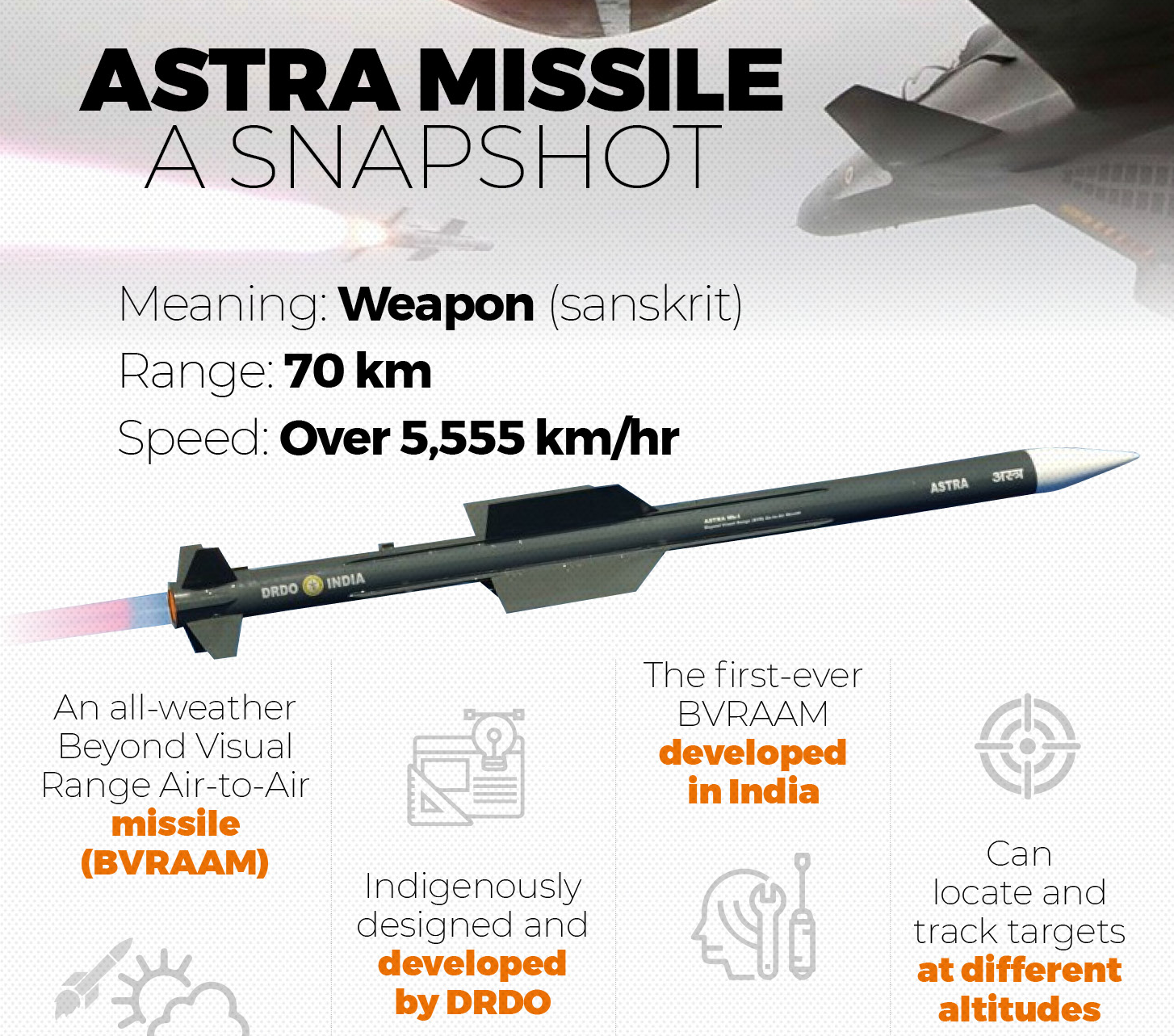
Features of ASTRA Missile
- ASTRA is a single-stage solid-propellant missile with a mid-course inertial guidance system and a terminal active radar homing system.
- The missile is designed for high agility, accuracy, and reliability, ensuring a high single-shot kill probability (SSKP). It can carry a warhead of 15 kg.
- ASTRA has a range of about 110 km in head-on mode and 20 km in tail-chase mode.
- It can achieve a speed of over Mach 4.
- ASTRA can be launched from different altitudes, from sea level to 20 km.
- It can engage targets at different angles, from 0° to 45°.
- ASTRA can be integrated with various fighter aircraft, such as Sukhoi-30 MKI, Mirage-2000, etc.
LCA Tejas
- LCA Tejas is the lightest, smallest and tailless multi-role Supersonic Fighter Aircraft.
- It is designed to carry a range of air-to-air, air-to-surface, precision-guided weapons.
- It has the air-to-air refuelling capability.
- LCA Tejas has a maximum payload capacity of 4000 kg. It can achieve a speed of Mach 1.8.
- LCA Tejas is developed by the Aeronautical Development Agency (ADA) and Hindustan Aeronautics Limited (HAL) under the Light Combat Aircraft (LCA) programme.

{GS3 – S&T – ISRO – 2023/08/24} Success of Chandrayaan-3 Mission (LVM3-M4)
|
- The mission will attempt to study water-ice, which was detected by Chandrayaan-1.
Significance of the Successful Landing of Chandrayaan-3
- India became the fourth country to soft-land a spacecraft on the moon.
- India becomes the first country to soft land a spacecraft near the moon’s south pole.
- This success puts India in a strong position which has recently signed the Artemis Accords, a US-led international partnership on planetary exploration and research.
Artemis Accords
|
Chandrayaan-3 Mission

- The Chandrayaan-3 mission is a follow-up of Chandrayaan-2.
- Aims:
- To demonstrate India’s ability of soft landing on Lunar Surface
- To demonstrate rover roving on the moon
- To conduct in-situ scientific experiments
- It consists of a Lander module (Vikram), a Propulsion module, and a Rover (Pragyan).
- Mission Life: One Lunar day, i.e., 14 Earth days. (The moon takes around 28 Earth days to complete one rotation on its axis and one revolution around the Earth.)
- Launch Vehicle (Rocket): Launch Vehicle Mark-III (LVM3) or GSLV Mark III rocket.
- The Chandrayaan-3 is powered by solid fuel, liquid fuel, and cryogenic fuel engines.
Payloads and Experiments to be Conducted
- Lander Payloads:
- Chandra’s Surface Thermophysical Experiment (ChaSTE): To measure the thermal properties of the lunar regolith near the polar region.
- RAMBHA (a Langmuir Probe): To measure near-surface plasma density and how it changes.
- Instrument for Lunar Seismic Activity (ILSA): To measure lunar seismic activity.
- LASER Retroreflector Array (LRA): To understand the dynamics of the moon.
|
- Rover Payloads:
- LASER Induced Breakdown Spectroscope (LIBS): To study the chemical and mineralogical composition of the lunar surface.
- Alpha Particle X-ray Spectrometer (APXS): To measure the elemental composition of the lunar soil and rocks.
- Propulsion Module Payload:
- Spectro-polarimetry of HAbitable Planet Earth (SHAPE): To study Earth from lunar orbit.
Launch Vehicle of Chandrayaan-3 Mission
|
How the Chandrayaan-3 Lander Reached the Moon?
- Initially the Chandrayaan-3 mission was launched into an Elliptic Parking Orbit (EPO) around the Earth at an altitude of 179 km.
|
- Then the spacecraft gradually increased its orbit in a series of manoeuvres to escape the Earth’s gravity and slingshot towards the moon.
- After reaching close to the moon, the spacecraft was captured by its gravity.
- Once that happened, another series of manoeuvres reduced the orbit of the spacecraft to a 100×100 km circular one.
- Thereafter, the lander, which carried the rover inside it, separated from the propulsion module and started its descent towards the moon’s surface.
- After 41 days, the lander successfully landed near the lunar south pole.
Why the Chandrayaan-3 Lander was Landed During Lunar Dawn?
- The lander and rover has life of one lunar day, i.e., 14 earth days because the rover and lander cannot survive the extreme drop in temperatures during lunar nights.
- The lander was landed at lunar dawn, so that, it has the maximum time to carry out its mission.
Why to Explore the Lunar South Pole?
- Due to their rugged environment, the polar regions of the Moon have remained unexplored till date.
- There are indications of the presence of ice molecules in substantial amounts in the deep craters in this region (Chandrayaan-1 mission indicated the presence of water on the lunar surface).
- Due extreme cold temperatures anything trapped in this region would remain frozen in time, without undergoing much change. These trapped things could provide clues to the early Solar System.
Why hasn’t Any Spacecraft Ever Landed near the Lunar South Pole Before Chandrayaan-3?
- All the landings on the Moon so far have happened in the equatorial region.
- Even China’s Chang’e 4, which is the first spacecraft to land on the far side of the moon (the side that does not face the earth) landed near the 45° latitude.
Why Lunar Equatorial Region is Chosen for Landings?
- Terrain and temperature of lunar equatorial region are more hospitable and conducive for a long and sustained operation of instruments.
- The surface here is even and smooth and there are fewer hills or craters.
- Sunlight is present in abundance, at least on the side facing the earth. So, it offers a regular supply of energy to solar-powered instruments.
Why Lunar Polar Region is Not Generally Chosen for Landings?
- The lunar polar regions are not very conducive for landings because many parts lie in a completely dark region (where sunlight never reaches), and temperatures can go below 230°C.
- Lack of sunlight and extremely low temperatures create difficulty in the operation of instruments.
- Moreover, there are large craters all over the place, ranging from a few centimetres to several thousands of kilometres in size (e.g., Shackleton, Aitken etc.)

Why Some Parts of the Lunar Polar Regions don’t Receive Any Sunlight?
|
Whats Next After Chandrayaan-3 Mission?
- The third phase India’s lunar exploration will begin with a collaboration between ISRO and the Japan Aerospace Exploration Agency (JAXA) for the Lunar Polar Exploration (LUPEX) mission.
- LUPEX involves a lander and a rover that will study water-ice at the moon’s South Pole.
- LUPEX is set to use the landing system that ISRO developed for Chandrayaan-2 and -3.
Previous Chandrayaan Missions
- Chandrayaan programme (also known as the Indian Lunar Exploration Programme) is a series of lunar space missions by ISRO.
Chandrayaan-1
- Chandrayaan-1 is India’s first mission to the moon launched by the ISRO in 2008.
- It was launched using the Polar Satellite Launch Vehicle (PSLV).
- It was primarily an orbiter mission. After its launch, it entered the lunar orbit and began circling the Moon to study its surface and gather data.
- The mission also had an impact probe named Moon Impact Probe (MIP) which separated from the orbiter and made a controlled crash landing on the lunar surface near the south pole.
- Findings:
- Confirmed presence of water in lunar soil.
- Detected titanium, calcium, iron, aluminium and magnesium on the moon.
- Evidence of lunar caves formed by an ancient lunar lava flow.
- Past tectonic activity on the lunar surface.
- Picked up a type of lighter-density crystals which could be found only if the surface was once liquid and confirmed magma ocean hypothesis.
- Findings show that the Moon’s interior was dynamic and interacted with the exosphere, contrary to the belief that it was dormant.
Magma Ocean Hypothesis
|

Chandrayaan-2
- Chandrayaan-2 is India’s second mission to the moon.
- It comprised a fully indigenous Orbiter, Lander (Vikram) and Rover (Pragyan).
- It was launched using the Launch Vehicle Mark-III (LVM3) or GSLV Mark III rocket.
- It targeted the South Polar region of the moon which was completely unexplored.
- Aim: To trace the location and abundance of lunar water.
- Findings:
- Chandrayaan-2 confirmed the findings of Chandrayaan-1.
- It helped in separately identifying the water and the hydroxyl molecules.
- Vikram Lander crashed while attempting to make a soft landing on the moon’s surface.

{GS3 – S&T – Space – 2023/08/24} Crash Landing of Luna-25
- Context (TH | IE | IE): Russia’s Luna-25 (or Luna-Glob-Lander) spacecraft crash landed on the Moon’s surface.
- Luna 25 was attempting to soft land close to the lunar South Pole a couple of days before India’s, Chandrayaan 3.
- Significance:
- It was the first lunar mission of Russia after the Soviet Union disintegration.
- If Luna 25 would have successfully soft landed then it would have became the first country to soft-land close to the South Pole.
- Implication: The failure of Russia’s Luna-25 foretells the country’s limited ability to contribute to the International Lunar Research Station programme, which it leads together with China.
Luna-25 vs Chandrayaan-3
|
Luna-25 |
Chandrayaan-3 |
|
Mission Status |
|
|
Failed |
Success (India became first country to soft-land close to the South Pole) |
|
Time Taken to Reach Moon |
|
| 12 days | 41 days |
|
Trajectory |
|
| Luna-25 followed a more direct trajectory towards the moon, owing to its lighter payload and more fuel storage of Soyuz Rocket.
|
Chandrayaan-3 followed a circuitous route towards the moon, owing to its relatively heavier payload and less fuel storage of Launch Vehicle Mark-III (LVM3) or GSLV Mark III rocket.
|
|
Rover |
|
| Luna-25 did not carry a rover. | Chandrayaan-3 carried a rover named Pragyan capable of moving around 500 m. |
|
Landing |
|
|
¯ |
Chandrayaan-3’s payloads are solar powered and has lifetime of one lunar day (or 14 Earth days).
So, it landed at the dawn of a lunar day to ensure that the experiments get the full 14 earth days. |
|
Mission Lifetime |
|
| Luna-25 would have worked for a year. Because it had a heating mechanism and a power source other than just solar panels. | Chnadrayaan-3 will work only one lunar day (or 14 Earth days). Because it does not have a heating mechanism to keep the electronics safe from the extreme cold temperatures during the lunar night. |




![PMF IAS Environment for UPSC 2022-23 [paperback] PMF IAS [Nov 30, 2021]…](https://pmfias.b-cdn.net/wp-content/uploads/2024/04/pmfiasenvironmentforupsc2022-23paperbackpmfiasnov302021.jpg)





